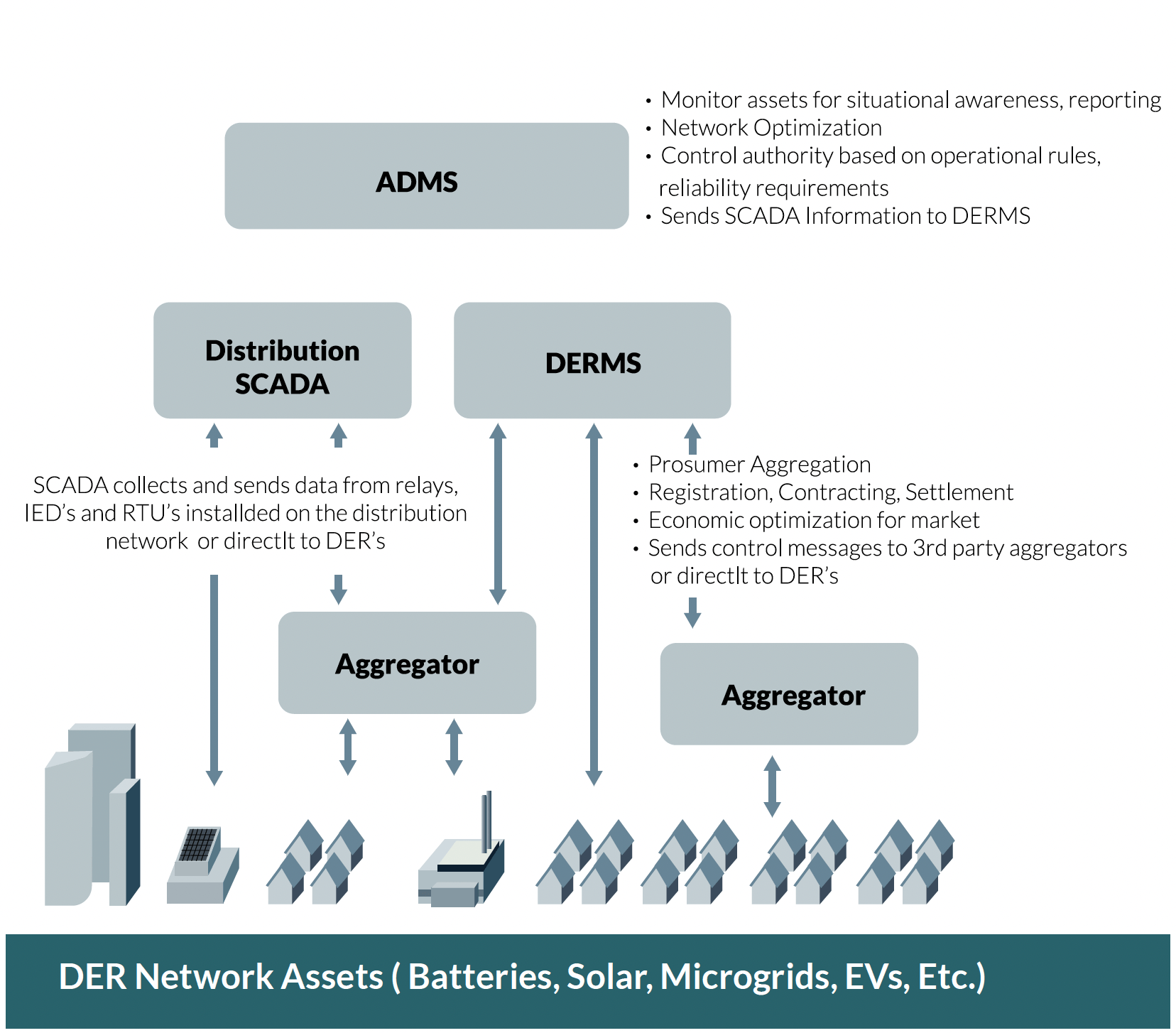There is a growing interest among utilities and industry stakeholders in modernizing the distribution systems beyond the automation efforts of metering infrastructure field switches. This has led to an increase in procurement of vendor-supplied Advanced Distribution Management System (ADMS) by a growing list of load-serving entities. ADMS solutions integrate SCADA,
Outage Management (OMS), and Distribution Management (DMS) functionality in a common database and user interface.
What is interesting is the “A” in the ADMS product solutions. This “advanced” denotation refers to the ability to perform power
load flows, contingency analysis, and outage management on top of the normal DMS functions. Regardless of vendor claims,
this is a considerable challenge due to the distribution modeling and field SCADA necessary to allow these transmission-type
applications to be accurate and useful. This is a daunting task for many utilities that have not had a need to provide all the data relationships that a detailed network model requires.
Along with ADMS, some utilities are integrating newer functionality called Distributed Energy Resource Management Systems
(DERMS). DERMS support such functionality as: Volt-VAR control, Dynamic Network Topology, DER Load Forecasts, DER
situational awareness, DER susceptibility, network constraint management using DERs, energy arbitrage, and DER fleet management. The market is still deciding if DERMS will be independent systems, integrated with an ADMS, or an extra application

within the “advanced” part of an ADMS. However, to be useful, DERMS requires much more data than just a power flow model
to equitably dispatch distributed generation and charging resources. To be accurate, each generation and storage resource
must be modeled along with the controls implemented for those resources that are or need to be dispatchable. Some DERMS
systems support modeling of Demand Response (DR) contracts, and integration with Demand Response (DR) applications for
data and possibly controls, increasing Distribution system operators’ situational awareness of utility-initiated impacts to the
grid – optimizing the use of DR and Distributed Energy Resource (DER) to relieve constraints on the grid. A very advanced
technology being incorporated into combination ADMS/DERMS systems is an integration of energy arbitrage with reliability
optimization, which ensures grid reliability while maximizing the economics of DER management (minimize Green House Gas
and cost, interfacing with spot and forward market prices where available).
Several vendors are offering new approaches to DERMS that piece together the technologies required to give intelligence to a DERMS solution. These new approaches represent flexibility whereas most DMS, let alone ADMS, vendor solutions are pretty
much SCADA systems with bolt on applications. This is a new arena in which some non-ADMS vendors are participating, such
as OSIsoft (solutions such as PXiSE and DERNetSoft, with partners) and mPrest. For example, if a utility utilizes OSIsoft PI, the
data collection and analytical tools for the solutions based on PI come out of the box and the solutions take advantage of that to bring in distribution specific analytics and tools. There are many details in all of this, but it is a chance to actually implement a DERMS solution that can grow and adapt as the utility’s knowledge, needs, and grid complexity expands.
Safe to say, distribution’s time in the sun is now here (literally) and the amount of changes heading its way are enormous on two fronts: distributed generation and dispatchable storage (think EVs, too). Not having a coordinated and manageable set of tools to handle both these areas will be unfortunate for utilities struggling to deal with more and more distribution demands.




